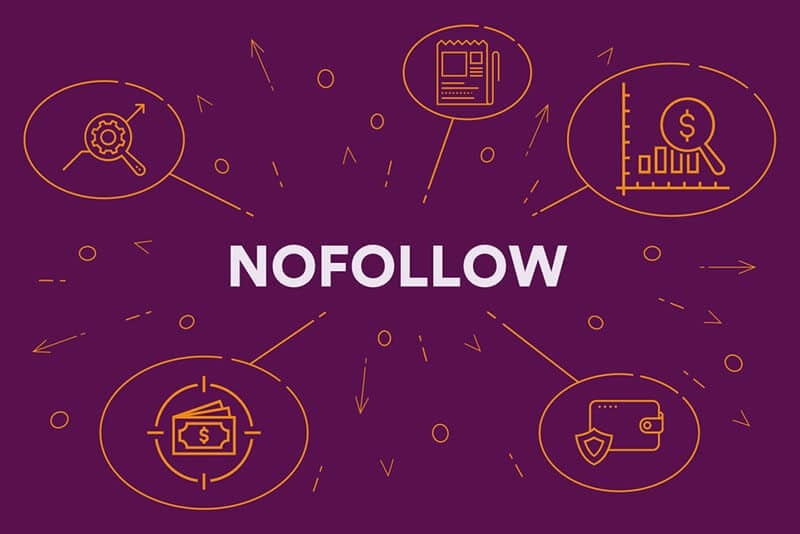Nofollow Attribute: Protecting Websites From Spam
-

Aaron Gray
-
 April 26 , 2023
April 26 , 2023 -
 4 min read
4 min read
The first update for 2005 was the nofollow attribute in January. The function was created through collaboration between Google, Yahoo, and Microsoft to battle against web spam by enhancing how search engines identify spam links.
What’s It For
This new indexing command aimed to reduce the link and comment spam that affects many websites particularly high-performing blogs. The nofollow attribute is a value assigned to a link and anchor text that acts as a flag to search bots about how the hyperlink shouldn’t affect the ranking of the target in its index since the owner has explicitly not vetted it. It’s a way to signal Google that someone else added the link to the site, not the blogger.
What Were Its Effects
While it may not have been the regular algorithm update, the use of the nofollow attribute did have a significant effect on the link graph. Bloggers, forum operators, and websites that allowed guest posting suffered considerable losses in their ranking when people exploited the system by spamming them with links.
Blog comment spam was a favorite black hat tactic in Google’s early days because it was an easy tool that helped spammy sites rank well on the search engines. This time, they can easily add this value as a default for hyperlinks posted in the comments section and their site’s reputation is protected.
A nofollow attribute for a link signals to Google that:
There’s no follow through to that particular page.
It shouldn’t count the link in measuring PageRank link popularity scores.
It shouldn’t include the anchor text in identifying what search terms the target page is relevant for.
It’s crucial to understand that a nofollow attribute doesn’t signify that you’re flagging a site or page as untrustworthy. It merely denotes the fact that you’re informing Google that you don’t own the link and don’t explicitly approve of its inclusion in your content.
What It Means for You
Some people still practice comment spamming, especially in blogs. It’s essential that you protect your site’s reputation by making nofollow a default in the comments section, guest posts, or parts that involves visitor participation.
Inbound links from blog comments, social media posts, forums, news sites, widgets, and press releases are typically nofollow today. Popular websites that use this attribute on outbound links include YouTube, Wikipedia, Reddit, Medium, and Quora.
Nonetheless, a nofollow link still has SEO value because:
-
It Still Boosts Brand Awareness Commenting on blogs and popular sites with your link continues to be a common practice today because, regardless of the attribute tagged for your hyperlink, it still introduces your brand to a new audience. Once subscribers of these websites click on your link and gets redirected to your page, you can market to them directly.
Of course, it’s crucial that you read the content of the article and write your thoughts about it while cleverly incorporating your link in the comment. Your post should contain relevant insights and not look spammy. - It Still Produces Link Juice Link juice pertains to the SEO value that a hyperlink generates for a particular website or page. While a nofollow won’t contribute link juice to its target directly, links with this attribute can still produce traffic for your domain by creating a pathway for other sites to link back to you. Moreover, the overall frequency and placement of this type of hyperlink are considered by search engines for your overall page ranking position especially when the host is deemed as authoritative.
- It Still Improves Site Authority Although domain and page authority doesn’t have any bearing on your website’s ranking, other entities such as users, listing services, directories, and advertisers may factor these in when deciding to work with you. Typically, nofollow links are counted along with the dofollow ones for key metrics, so they can still help improve your site authority and provide more traffic as well as business opportunities.
-
It Helps Keep Google off Your Back Google penalizes websites that are too blatant in gaming the system. Having too many dofollow backlinks will make the search engine suspicious of your online activities. Balancing it with some nofollow links gives off the impression that you’re merely creating backlinks for SEO. Even so, all these hyperlinks continue with their role in directing more traffic to your website.
The team also insists that all paid links should be nofollow because they want your rank to be determined by the value it provides users instead of how much you can pay for visibility. Any hyperlink that attempts to manipulate the search engine will be considered as part of a link scheme which will be penalized by Google.


